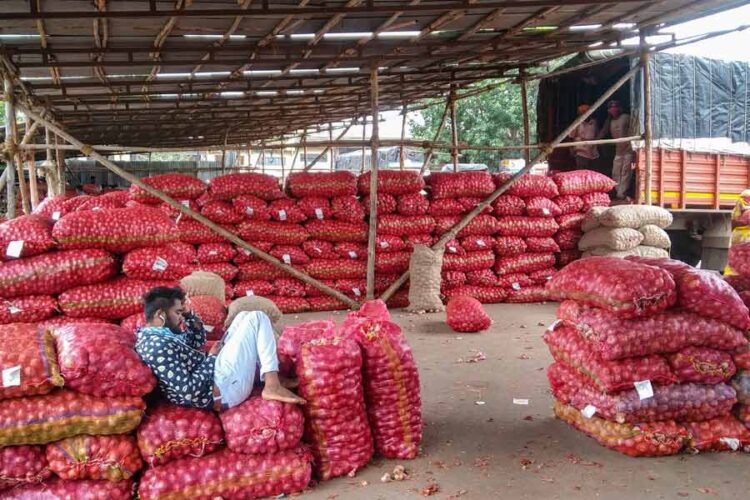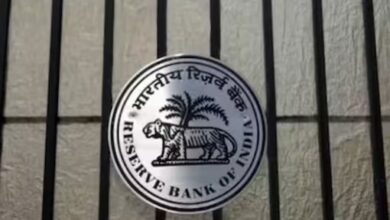Despite a restriction on shipments, the center permits the export of 99,500 tons of onions to six neighboring countries
On Saturday, the Center said that, in spite of the export prohibition, 99,500 metric tons of onions, mostly from Maharashtra, had been permitted to be sent to six neighboring nations.

Additionally, the Center has approved the shipment of 2,000 tons of specifically grown white onions to the Middle East and certain European nations.
The export of onions was prohibited by the government on December 8, 2023.
In a formal declaration, the Ministry of Consumer Affairs, Food, & Public Distribution said that 99,150 tons of onions had been approved to be exported to six neighboring countries: Bangladesh, the United Arab Emirates, Bhutan, Bahrain, Mauritius, and Sri Lanka.
The export ban was put in place to guarantee sufficient local supply in light of the anticipated decline in the Kharif and Rabi harvests in 2023–2024 as compared to the previous year.
It was also said that the prohibition was put in place in response to a rise in demand on the global market.
The domestic onions to be shipped via e-platform at L1 pricing were procured by the National Cooperative Exports Limited (NCEL), the agency for the export of onions to these nations.
At the agreed-upon fee, NCEL has provided services to the agency or agencies designated by the government of the receiving nation on a 100% upfront payment basis.
The prices that are currently in effect in the destination market as well as in other domestic and foreign marketplaces are included in NCEL’s offer rate to purchasers.
The export quota allotted to the six nations is being fulfilled in accordance with the requests made by the countries of destination.
“As the largest producer of onions in the country, Maharashtra is the major supplier of onions sourced by NCEL for export,” stated the statement.
Additionally, the government had approved the shipment of 2,000 tons of grown white onions, mostly to export markets in the Middle East and some European nations.
“Being purely export-oriented, the production cost of the white onion is higher than other onions due to higher seed costs, the adoption of good agricultural practices (GAP) and compliance with strict maximum residue limits (MRL) requirements,” stated the statement.
The Department of Consumer Affairs’ Price Stabilization Fund (PSF) has set a purchase goal of 5 lakh metric tons for onion buffer from the Rabi harvest in 2024.
Local organizations like FPOs, FPCs, and PACs are partnering with central agencies like NCCF and NAFED to facilitate the purchase, storage, and farmer registration for the purpose of initiating the acquisition of any store-worthy onions.
From April 11–13, 2024, a high-level delegation from the Department of Consumer Affairs, NCCF, and NAFED traveled to the Maharashtra districts of Nashik and Ahmednagar to inform farmers, FPOs/FPCs, and PACs about the need to purchase 5 lakh metric tons of onions for buffer stock.
With technological assistance from BARC, Mumbai, the department has increased the amount of onions to be cold-stored and irradiated from 1,200 metric tons to over 5,000 metric tons this year in an effort to lower the amount of onions that spoil during storage.
According to the statement, the storage loss was reduced to less than 10% as a consequence of the onion irradiation and cold storage pilot program that was implemented last year.
The Union Agriculture Ministry published the onion production numbers in March.
The data indicates that, compared to around 302.08 lakh metric tons the previous year, onion output in 2023–24 (first advance estimates) is anticipated to be approximately 254.73 lakh metric tons.
The report indicated that this was caused by a drop in production of 34.31 lakh metric tons in Maharashtra, 9.95 lakh metric tons in Karnataka, 3.54 lakh metric tons in Andhra Pradesh, and 3.12 lakh metric tons in Rajasthan.







